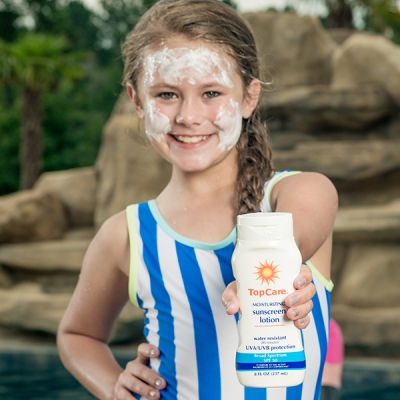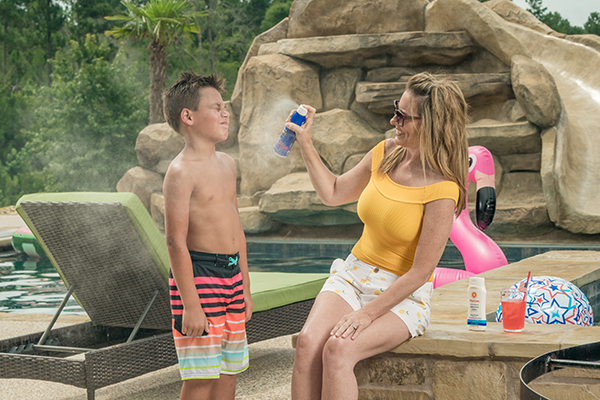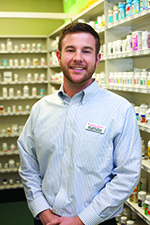Posted on Monday, July 16, 2018
Fact: Summer in Texas is hot.
Some folks would blame the humidity, to which my wife’s hair will attest, but most know it’s the summer sun that reigns as King of the Heat. Yes, our state star emits an exhausting, relentless warmth that we Texans, never short on pride, will pit against Death Valley any day of the week. However, the sun also emits dangerous ultraviolet (UV) rays that, while less famous than the heat, can do real damage to skin, ranging from wrinkling to sunburns to melanoma. Protection from the sun is something to take seriously, especially in the South.

Apart from avoiding the sun altogether, our best protection against UV rays is to use sunscreen. Even though it seems like a simple concept, sunscreen and sun safety are often associated with countless myths and misperceptions. Allow me to illuminate some of the more common misunderstandings, untruths, and legends.
Myth #1: It’s cloudy outside today, so I don’t need sunscreen.
Wrong. Play it safe and apply sunscreen even on cloudy days. Clouds will only block about 20% of the sun’s UV rays. Likewise, water is only minimally effective at blocking UV rays. That is, jumping in a pool isn’t going to protect you either. Plus, the water’s surface can actually reflect UV rays, thus leading to even greater exposure.
Read more: Prioritize your health before you hit the road this summer. Check out these 4 tips for making sure you're all set with your medications while on holiday.
Myth #2: I like tanning but am careful not to get burned. I should be safe from sun damage.
Ultraviolet light exposure (from any source) increases your risk for skin cancer, much like cigarette smoke increases your risk for lung cancer. In fact, according to the Skin Cancer Foundation, skin cancer is more often linked to tanning than lung cancer is linked to smoking. Sunburns are also dangerous; just five or more sunburns in a lifetime will double a person’s risk for melanoma.
Myth #3:The higher the SPF in my sunscreen the better.
According to the American Academy of Dermatology (AAD), SPF or Sun Protection Factor peaks at around 30. At this level, about 97% of the sun’s rays are blocked. Since no sunscreen can block all of the sun’s rays, formulations with a SPF greater than 30 provide only incrementally higher protection. Whatever you use, choose a broad spectrum that blocks both types of UV rays (A and B) with an SPF of at minimum 15.

Myth #4: I covered my face, shoulders and arms with sunscreen. I’m good to go.
Don’t forget the other areas of your body that suffer from UV damage: ears, neck, eyes and surrounding skin and lips. Wearing hats, sunglasses and lip balm with a SPF of at least 30 is ideal. Even clothing can allow penetration of UV rays, so be generous with your application. It’s best to reapply sunscreen every 2 hours, or after swimming or sweating. The AAD recommends using about 1 ounce of sunscreen (about the volume needed to fill a shot glass) to cover the exposed area of skin for an individual of average size.
P.S. - All sunscreen products are 15% OFF with this week's Member Monday offer (07/23). Not a member? Sign up TODAY!
Myth #5: I am dark-skinned and should be protected against burning and sun damage.
While it is true that darker skinned individuals do not burn as easily as light or fair skinned people, everyone is subject to the harmful effects of the sun’s rays. Dark skinned individuals should still be diligent in limiting time in the sun and applying sunscreen using the same guidelines as lighter skinned people. Keep in mind that medications and medical conditions can also impact your sensitivity to the sun. Ask your pharmacist if you are at risk based on what medications you are taking.

Matt Baker is a pharmacist with Brookshire Brothers Pharmacy in Lufkin. He received his undergraduate degree from Texas A&M University in 2005 and his Doctor of Pharmacy from the University of Houston in 2010. He writes a monthly pharmacy and wellness article for the Lufkin Daily News and is active in the community. Matt's passion is serving his patients while ensuring that they are equipped to understand and take their medications properly.
View more of Matt's articles on the Brookshire Brothers blog.
